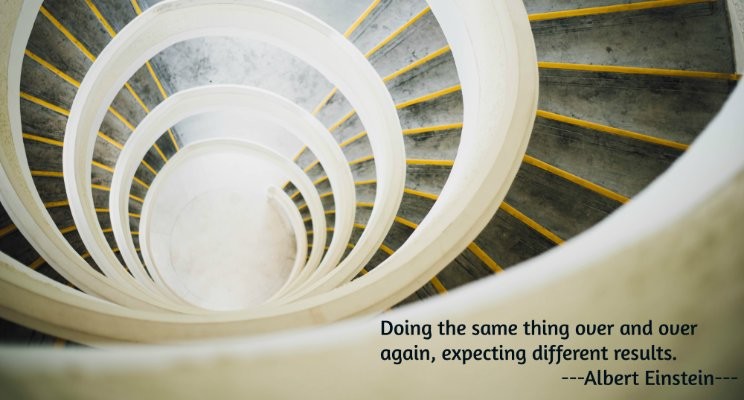Being an effective leader doesn’t mean drowning in your own pool of work. In my personal and professional growth, I’ve learned that setting boundaries, handling stress, and politely pushing back with a firm “no,” are all reasons that I’ve been able to achieve success. Great leaders learn to prioritize work while still maintaining healthy personal habits. Not only is it possible; it’s essential.
What causes the sensation of being swallowed up by your workload? In most cases, it’s due to several factors. Often, the inability to effectively prioritize is caused by a refusal to say no and/or a reluctance to delegate. Today, I’ll share some tools I’ve used to walk away from my laptop and phone when the day is done (or before it begins) and create space to be a full and complete human being.
You Create Your To-Do List
When I hear leaders share that they’re swamped by their to-do list, I ask a simple question: who’s making this list? Shifting your mindset to one of agency and empowerment over your tasks is a gamechanger. You are the only one who can make your to-do list.
You’ll have to determine what items make the list, and you’ll need to be cutthroat. We often use words like “picky, choosy, and selfish,” to invoke a negative connotation, but when it comes to the tasks you’re assigning yourself, you’ll need to see them in a positive light. Warren Buffet openly uses a strategy of ruthless elimination to focus his efforts, claiming that “Really successful people say no to almost everything.” Begin your to-do list with a brain dump, then determine what’s actually a “must-do now.” Conversely, decide what tasks are a “will-do later,” and be honest about what’s a “never will do.” Weed out everything you can, and begin with the most challenging items first. I like the phrase “eat the frog first,” and apply it to the order of the tasks throughout the day. When you’ve faced the hard conversation/task/hurdle first, you’ll feel lighter.
I also employ the Eisenhower Matrix when I’m prioritizing tasks. You’ve likely encountered this four quadrant tool before; it’s a way to give an “urgency” and “importance” rank to each task you’d like to complete. It’s a simple but highly effective set of vocabulary to help you decide where to focus your daily, weekly, and monthly efforts. A polite but firm “no” is a perfect response to tasks that don’t fall into the appropriate categories.
Learn to Delegate
Delegation can be a thorny topic. When it comes to taking things off our plates and passing them onto someone else’s, we’ve heard all the “reasons” why it’s an impossibility. They generally funnel into two basic assumptions.
- It’s faster to do it myself.
Sure, that may be true, but speed isn’t always the ultimate goal. Remember, you’re interested in prioritizing tasks that you alone must do. Keep those on your plate, and trust others to handle the rest. They may be slower than you, but you’ll be flying through your list of personalized to-do’s at a rapid rate. It will be a win/win in the end.
- I don’t think it will get done correctly.
This, quite frankly, speaks to a certain hubris. And, at the end of the day, hubris serves no one. Let’s say I’m not home for dinner and leave my husband in charge of the meal. I could settle into the belief that I’m the only one capable of feeding my family, run around prepping ingredients and make sure there’s a lasagna ready to go into the oven (thus adding more to my to-do list), or I could accept the reality that the goal (of making dinner) can absolutely be accomplished by my fully grown husband. When there are tasks to be done, there’s some leeway with how they’re accomplished. Let it go.
Carve Out Space for Yourself
What happens when you’ve created a manageable to-do list and learned to delegate appropriately? You’ll be able to carve out space for yourself. In an increasingly virtual work environment, the ability to step away from the screen is vital to living into your full potential as a human being.
Determine what you need to do to gain energy and feel refreshed. Maybe it’s a commitment to making your bed each day. For me, exercise is an essential part of setting up a good day. In the midst of my morning routine (including getting the kids to school), I make sure to workout and take the dog for a walk. During this time, I leave my phone at home. I’ve created a strict boundary around interacting with work obligations before I’m ready, and I won’t respond until I’m ready to be in the office.
When you’re setting up your personal time, leave some flexibility as you settle into a new routine. Don’t create a “cold turkey” situation – instead, move things around in your schedule for a few weeks to make sure you create a workable scenario to gain some personal space.
Tiffany Rosik, founder and chief executive officer of TGR Management Consulting, advises Fortune 1000 companies on aligning business and technology initiatives to achieve growth. Tiffany goes beyond project best practices by coaching Project Team Leaders on team dynamics and techniques to establish a self-sustaining model that creates a consistent experience and produces results. Connect or follow Tiffany Rosik on LinkedIn.




